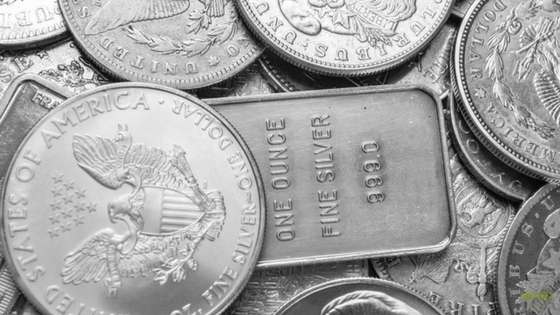
Silver demand is poised to hit record highs in 2022. One of the many reasons silver is valuable and in high demand is largely related to its industrial uses. It’s a highly conductive substance and is incredibly durable, and it’s frankly a simply amazing metal. Silver had a very high investment demand throughout the covid-19 pandemic and only continues to rise. But, should you be investing in silver?
As the economy ramps back up throughout the world, analysts are predicting demand to stay relatively high as the world resumes its operations. Whether you already invest in silver or are planning to add it to your portfolio, there are plenty of compelling reasons to invest in this particular precious metal. With that in mind, here are a few pros and cons of investing in silver.
It’s In High Demand—Especially for Industrial Use
In a technology-driven world, everyone uses devices and other items that incorporate silver. Here’s just a sample of the incredible array of activities we probably couldn’t do without silver:
- Checking out books at the library or tracking cargo using RFID tags
- Using solar panels
- Taking pictures with a camera
- Using a smartphone for anything
- Using batteries
- Soldering electronics
- Driving a car
To say that silver is a high-demand component of everything from smartphones to power plants is putting it mildly. Because silver has such wide and prevalent industrial use, its demand is skyrocketing these days. That makes it a prime candidate for investing.
It’s Seen as an Inflation Hedge, But Not as Good as Gold
Just like its shinier cousin, gold, silver is often considered an inflation hedge. Why? Because of a combination of factors.
Its supplies are limited and it’s a high-demand metal for industrial use. Historically, it’s been used to store wealth for centuries.
But the interesting thing about silver as an inflation hedge is that it requires a different allocation amount, which can make it interesting to invest in silver. Consider that although silver gets used more frequently and variously in different industrial/consumer applications than gold, its prices fluctuate much more than the other metal.
So, to use silver as an inflation hedge, financial advisors recommend trying to hedge inflation over time with a precious metal (instead of putting all your investment eggs in one basket) and understand if the amount of silver you’ve allocated for the hedge will actually be impactful when it comes to protecting cash flow against inflation. There are always opportunity costs associated with using any precious metal for inflation and—depending on your portfolio—silver’s might come too high to be as good of a hedge as gold.
It Holds Its Value Over Time
A big selling point of silver investing is how well it retains its value. It makes sense in a pragmatic sort of way. Silver and gold have long been considered valuable, used as money, and held in high esteem by royalty for thousands of years.
Why wouldn’t it retain value? But when it comes to the bigger picture of investing in silver in modern times, things aren’t that simple. To begin with, silver doesn’t have as high of an opportunity cost as gold. It’s less expensive and classified as a commodity.
Commodity trading is popular when times get a little rough (especially during recessions and wars) because it can provide some portfolio counterbalancing for savvy investors. Silver is an affordable investment option. Although it can be volatile at times and isn’t traded as much as gold, it can still offer a relatively safe haven for your investments.
Consider investing in a 5 troy oz silver bar to get started with building your silver investment strategy. Physical silver offers much more of a save haven than ETFs/stock and can be overseen completely by the individual instead of requiring a brokerage or custodian for management. Silver is almost as liquid as gold, so it can be easily exchanged for cash if needed.
But It Doesn’t Offer Interest or Dividends
Silver is a moderately priced commodity. As such, it’s a pretty strong investment. That also makes it a prime candidate for diversifying assets in a portfolio. That said, it doesn’t necessarily pay dividends in physical investing.
The reason for this is owning it requires verification, security, and storage. It’s possible to earn some dividends on your silver investments through a precious metals exchange-traded fund, however. Owning physical silver is still great because it will retain its value—or possibly grow in value—when it’s time to sell or trade it.
Silver is undervalued in the market, so diversifying a portfolio with the metal rather than focusing on it as a primary investment can help boost your portfolio over a long period of time. Remember that physical silver has always had value as a currency and is very secure during times of geopolitical unrest, inflation, and financial turmoil.

It Can Be Unpredictable
We’ve already established the demand for silver is high right now. Unfortunately, supplies of precious metals are a bit unpredictable at times. The covid-19 pandemic may have helped demand for silver surge, but it also led to some interruptions in mining operations throughout the globe.
This led to fewer silver supplies and an increase in costs. Supply couldn’t meet demand as fast as required, leading to metal shortages across the globe. Fast forward to today and some of that’s recovered, but there are other factors impacting silver prices now in play.
While prices and demand are both expected to rise, a combination of international turmoil, higher interest rates, and uncertainty might lead to further unpredictability in the near future.
